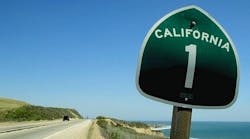According to Science Daily's featured research, a lingering recession, the elimination of Medicaid dental reimbursements, and a glut of established dentists in wealthier, populated areas may explain why more new dentists are practicing outside California, according to a new policy brief from the UCLA Center for Health Policy Research.
California Dental Association "Cares" program receives $50,000 donation from Del E. Webb Foundation
"Good access to dental care depends on having a robust supply of new dentists in California," said Nadereh Pourat, director of research at the center and lead author of the study. "We need a new generation of dentists to replace the many dentists who are close to retirement."
Grass looks greener across state line
While California still saw an increase in the number of dentists and had more licensed dentists -- 35,000 plus -- than any other state in 2012, the number of those licensed to practice in California who opted to reside or work out of state grew 6% between 2008 and 2012.
Readers surveyed on dental staff pay strategies
The migration is especially noticeable among new dentists. In 2012, 86% of those licensed within the previous five years practiced in the state -- a 10% drop from 2008. In addition, new dentists in 2012 made up a smaller share of the state's overall supply. Of all regions, the San Joaquin Valley tallied the highest percentage of new dentists, who made up 15% of the local supply.
A noteworthy development: Analysis showed one group -- women -- made up almost half of all newly licensed dentists in California in 2012.
Older dentists nearing retirement, newer dentists more specialized
Age may also start affecting supply. Nearly one-quarter of actively licensed dentists in California have been practicing for 30 years or more and are close to retirement age. Northern and Sierra counties had the highest proportion of dentists nearing retirement, at 40 percent.
The report also suggests that it may become tougher for adults to get basic oral care than gum surgery, as more new dentists are specializing.
Overall, 13% of newly licensed and actively practicing dentists in the state identified themselves as specialists in 2012, a 6% bump since 2008.
Read the entire article on sciencedaily.com.






